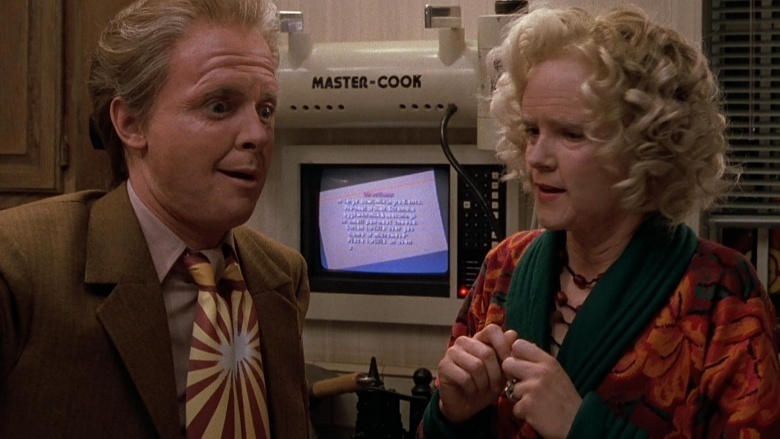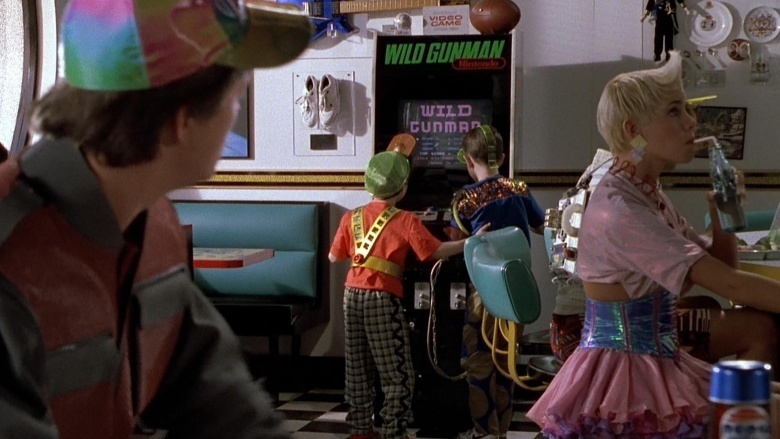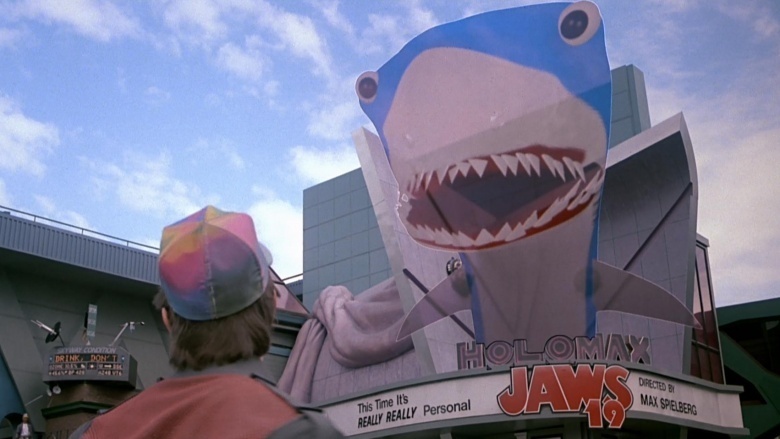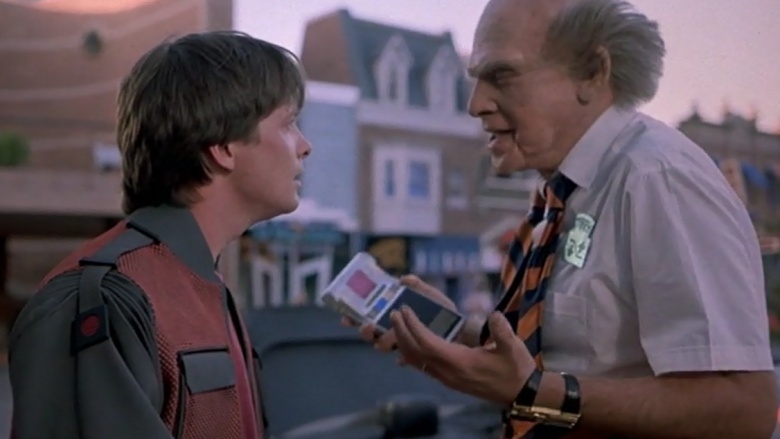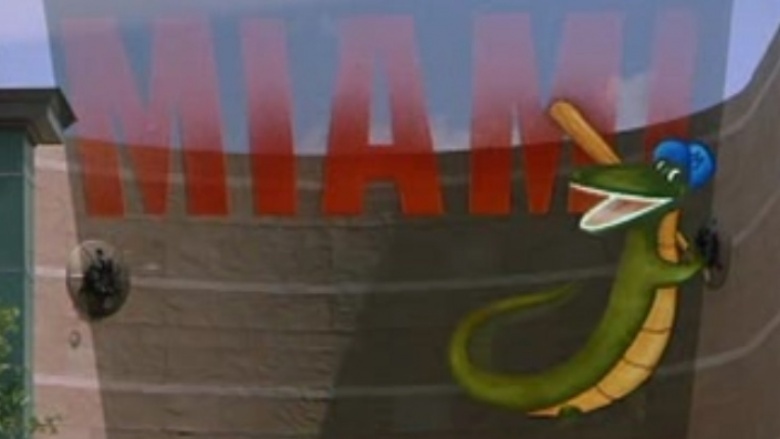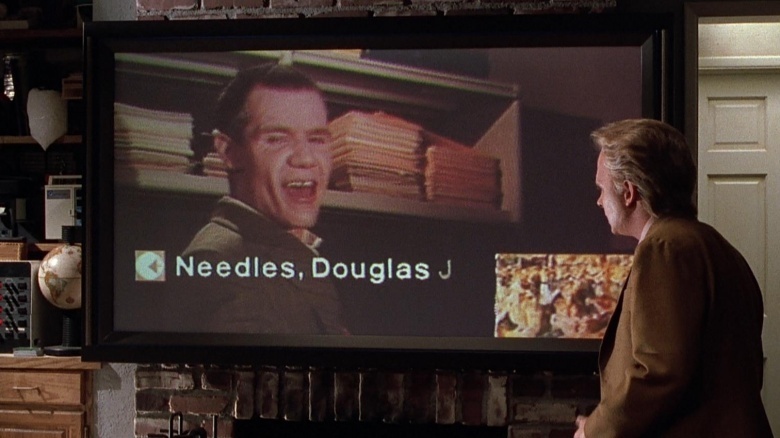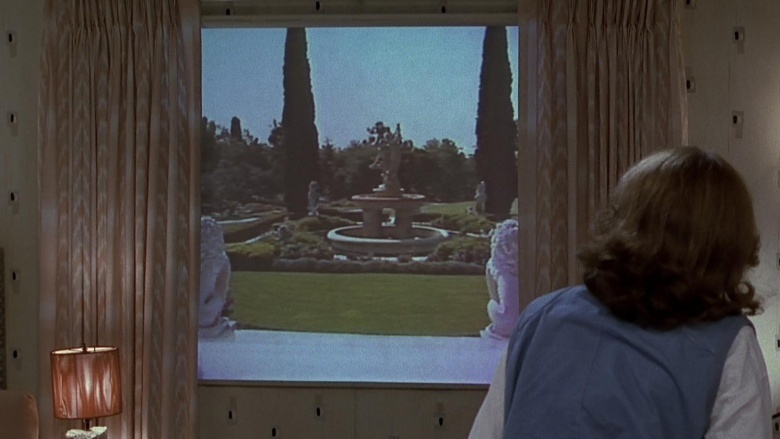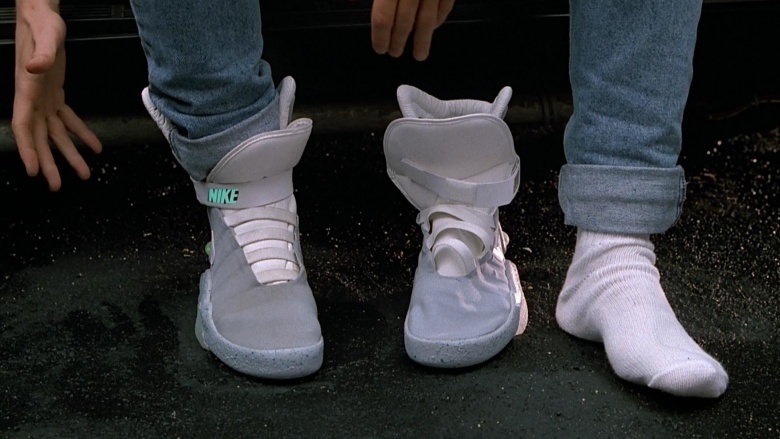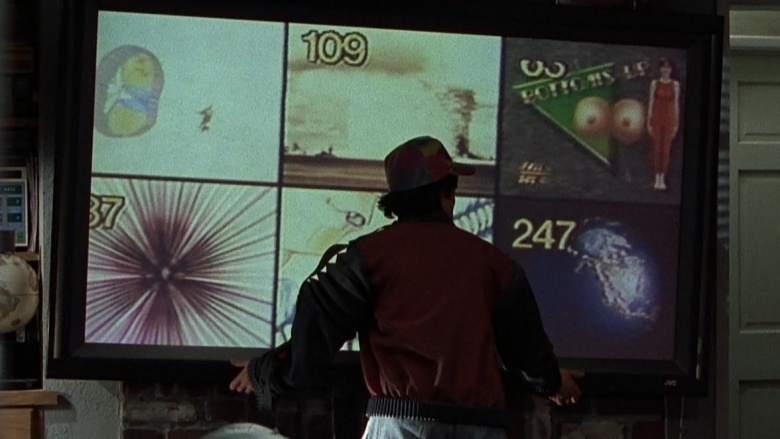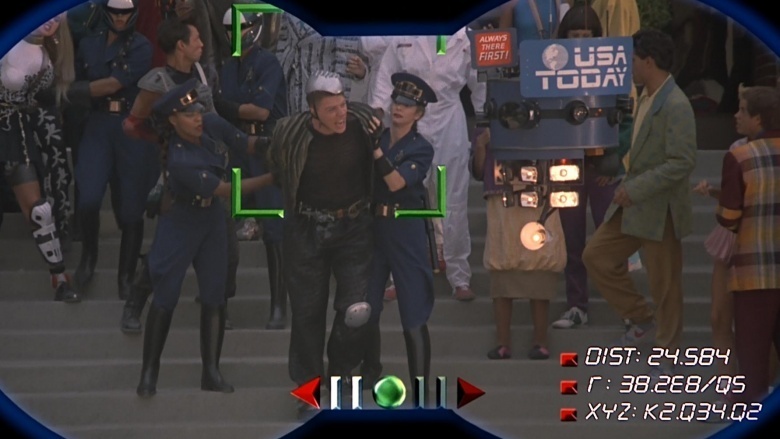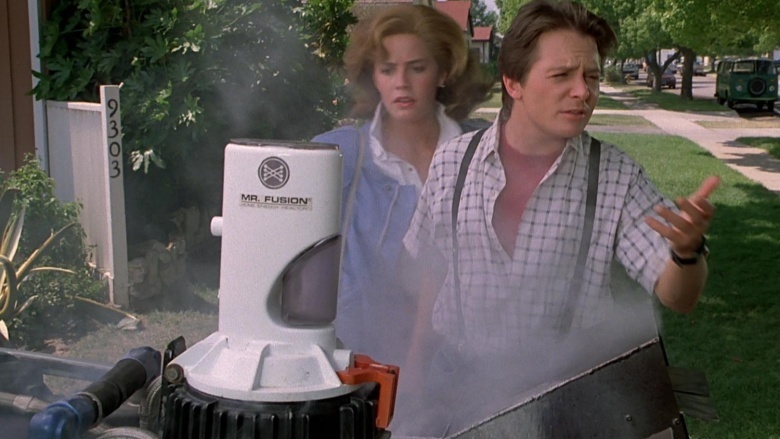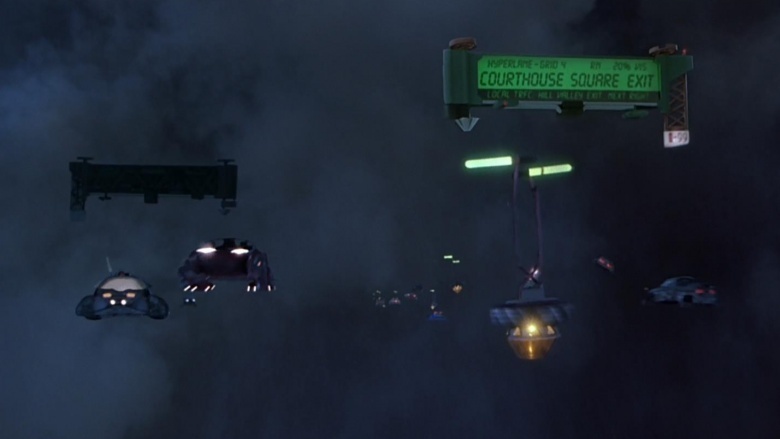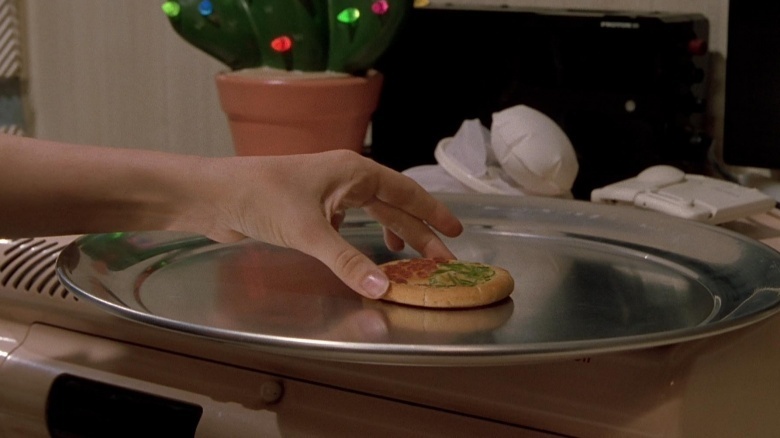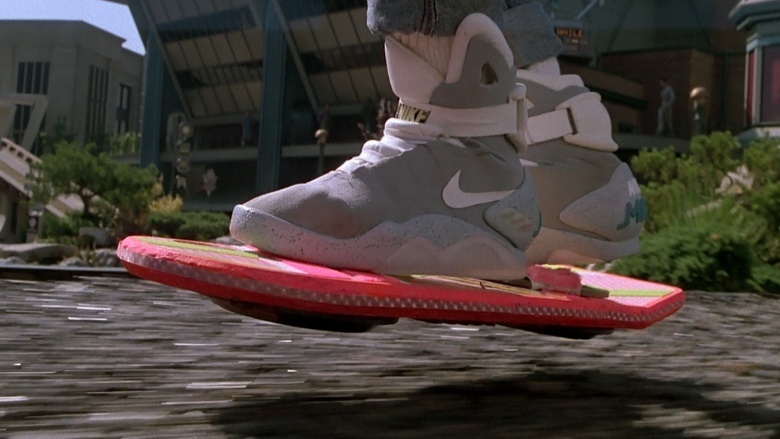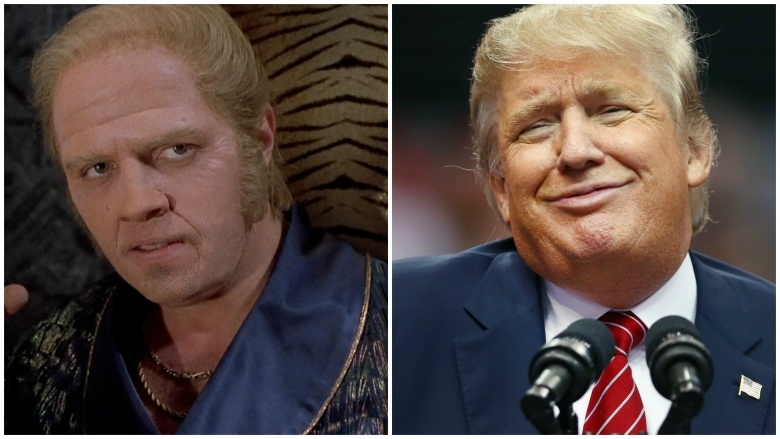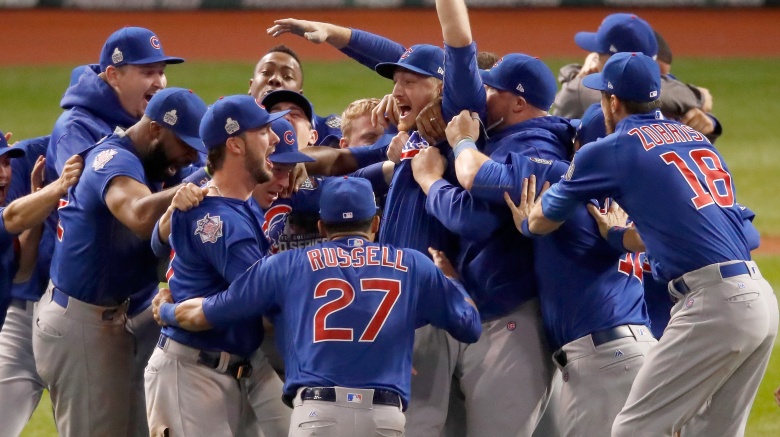Ways Back To The Future 2 Eerily Predicted The Present
Almost 30 years ago, Back to the Future Part II provided a glimpse of the future that seemed funny and utterly fantastical at the time—but has actually come true in a number of surprising ways. Here's some of the stuff future Marty and Biff wouldn't necessarily be surprised to see today.
Hands-free and wireless video games
Shortly after Marty McFly arrives in the future on October 21, 2015, he plays a game of Wild Gunman with some kids (one played by a very young Elijah Wood), who complain that the game requires hands. It was a joke, but in recent years, video games have made it a reality. First there was 2006's Nintendo Wii, which relies on wireless motion controllers. Then Microsoft took the concept a step further with the Kinect for Xbox 360 and Xbox One in 2010, which did away with controllers altogether in favor of technology based on cameras and advanced computer vision software to understand a user's gestures (with varying results, of course).
3D movies
While walking the streets of Hill Valley in the future, Marty is momentarily startled by a three-dimensional CGI Jaws erupting from a movie theater marquee. At the time, the shark was pretty terrifying, but compared to the increasingly immersive 3D movies that have been produced since then, the shark is far from scary, and even appears kind of cartoony.
Tablet computers
Shortly after Marty escapes a beating from Griff and his thugs, an older gentleman asks Marty for a donation to repair the clock tower. The device he uses to collect the donation? A tablet computer. Stupidly futuristic at the time, tablets have become commonplace since Apple debuted the iPad in 2010—several companies now compete for market share, and some cellphones have grown so much in size that the term "phablet" was coined to describe them.
Florida has a baseball team
At one point, Marty expresses surprise at the news that Florida has a baseball team—specifically Miami. While no team name is given, the mascot is a cartoon alligator holding a baseball bat. Since Back to the Future Part II, not one, but two baseball teams have established their homes in Florida. The first, in 1993, was the Florida Marlins, who changed their name to the Miami Marlins in 2011. The second, established in 1998, was the Tampa Bay Devil Rays—who also changed their name, becoming simply the Tampa Bay Rays in time for the 2008 season. True, neither team features an alligator as their mascot, but cut us some slack: the fact that a baseball team is based in Florida is what's important here. We're pretty close on this one.
Teleconferencing
Older Marty McFly suffers the ultimate indignity when his boss, Mr. Fujitsu, fires him while he's at home via video chat. Today, not only can employers fire their employees via video chat, they can interview potential employees the same way, as teleconferencing has become commonplace. Hardware like webcams and video chat software programs like Skype and FaceTime have made this futuristic wonder (and possibly horror) all too real. But whatever points you give the movie might be negated by its prediction of a house filled with fax machines.
Wall-mounted TV
When Mr. Fujitsu fires future Marty, he does so from a wall-mounted TV—a sight that's become pretty commonplace. The days of the bulky television set have been over since around 2010. True, flat panels have existed since the 1960s, but they didn't become easily available for purchase to the general public until the late 2000s and early 2010s. Now, try to find a cathode ray TV. You can't—unless you're in an antique store. At any electronics store, all you'll see are row after row of wall-mounted televisions, with widescreen aspect ratios that provide a true home-theater experience.
Auto-lacing sneakers
One of the many conveniences shown in the 2015 of Back to the Future Part II is the auto-lacing sneakers that Doc Brown gives Marty when they first arrive. How cool are they? You just slip your foot in, and the shoe does the rest. Those shoes have become a reality too—well, sort of. In early January 2015, Nike, the brand featured in the film, announced they'd been working on actually creating the shoes, and they were finally scheduled to arrive in stores on Nov. 28, 2016.
People's obsession with personal electronics
Here's one instance where a throwaway gag became a frightening reality. In the film, Marty's daughter Marlene McFly sits down to dinner wearing a pair of glasses she uses to do things like watch television and answer the phone. Google took the first steps to making this a real possibility with Google Glass in 2013, and while these glasses haven't become very widespread yet, some of the unintended consequences already exist. How many of us have been to dinner with people who paid more attention to their phones than their dining companions? Or worse, how many of us have seen someone lost in his or her cell phone while walking or driving? Maybe with this one, director Robert Zemeckis was trying to warn us.
Too many TV channels
In the future McFly residence, Marty Junior fires up one of the family's wall-mounted flatscreens and sets it to watch six different channels at once, with some of the channels bearing numbers in the hundreds. Since then, cable companies have come close to the thousand-channel mark, with various packages of basic cable networks, movie channels, local access, international channels, and various sports programming. And even with all that, we still can't find anything to watch.
Drone cameras
During Griff and his gang's arrest, a USA Today drone snaps a picture of them for the newspaper. They didn't exist at the time, but today, a growing number of people use and rely on the gadgets. Farmers use them to keep an eye on their livestock or crops, the military has found obvious applications for them, and Amazon has plans to use them for deliveries. Drones are also available for purchase by the average person for recreational pursuits, which, unfortunately, sometimes comes at the expense of other people's privacy. In fact, drones are now so commonplace that the FAA has had to come up a set of regulations.
Compost fuel
Also known as biogas, this one isn't as widespread as the others, but it does exist. When Doc returns from the future to get Marty, he refuels their time-traveling DeLorean by throwing some trash into Mr. Fusion—a banana peel and an empty beer can, to be precise. While this technology hasn't taken the globe by storm, a form of trash-as-fuel has found its way into some countries. When organic matter (like leftover food and biological waste) breaks down, it releases methane, carbon dioxide, and hydrogen, all of which can be combusted as fuel. Germany, Sweden, and Switzerland are early adopters of this technology. In fact, Sweden has used a biogas train, called Biogaståget Amanda, or "The Biogas Train Amanda," since 2005. And in 2007, approximately 12,000 vehicles used biogas fuel, most of them in Europe.
Flying cars
For about a decade, a company called Terrafugia has been working on making flying cars a reality. First, it unveiled the Transition in 2013, which has gotten off the ground—literally—and it has a range of about 400 miles. But to be honest, it just looks like a small plane, so it really doesn't quite fulfill the idea of a flying car. And with the hefty and "firm" price of $299,000, it may be awhile before every house has one in its driveway. Terrafugia's TF-X looks more like what we picture when we think of flying cars, and although it's yet to fulfill its promise yet, the company expects to have it on the road (and in the skies) by 2018. Flying-car fever seems to have caught on: in September 2015, Toyota filed a patent for one of their own. Now that companies are competing to make flying cars a reality, it's only a matter of time before we complain about rush hour from 30,000 feet.
Dehydrated and rehydrated food
You were probably amazed when Lorraine McFly dropped a pizza the size of a hockey puck into a machine, only to be rewarded with a full-sized pie after a few seconds. Well, while you can't yet order dehydrated Pizza Hut, this is another technology that does exist. Dehydrated food in its most basic form has actually been around since about 12,000 BC, and the rice and pasta we buy at the grocery store is dehydrated food that we rehydrate when preparing it for dinner. Since then the process has been technologized, and food dehydrators are available for purchase. Dehydrated food, similar to the pizza, is also also available from companies like Wise Company and MaxLife Foods. Unfortunately, none of it is actually as sophisticated or as cool as Lorraine's future pizza.
Hoverboards
The hoverboard became an instant sensation as soon as it popped up in Back to the Future II, and we spent decades demanding that science find a way to catch up. In early 2015, companies like Solowheel and the tantalizingly named Hov-Board released items they referred to as hoverboards, but those turned out to be just Segways without handlebars. But there is hope.
In August 2015, Lexus—yes, the car company—picked up the torch and created a hoverboard that actually hovers. The catch is that it needs a specially designed track and won't be mass-produced, as it was only created for a commercial. More intriguingly, in October 2014, husband and wife designers Jill and Greg Henderson mounted a Kickstarter campaign to fund their Hendo Hoverboard. With the $510,590 they raised, they founded their Arx Pax start-up and created an actual prototype, which was ridden by professional skateboarder Tony Hawk. While video of the ride shows that the board doesn't perform as well as the ones in the movie, it's enough for us to say that hoverboards do, in fact, exist. Just wear a helmet—and don't take it on the water.
President Trump
When Back to the Future Part II was released, Donald Trump had accrued a certain measure of success, but he was mostly known to people in the New York area—and many of them watched the movie without ever suspecting that the future version of Biff, who uses his ill-gotten wealth to build a casino empire that serves as a springboard into political power, was based on the mogul. "We thought about it when we made the movie," writer Bob Gale told The Daily Beast in 2015. "There's a scene where Marty confronts Biff in his office and there's a huge portrait of Biff on the wall behind Biff, and there's one moment where Biff kind of stands up and he takes exactly the same pose as the portrait." Whether the real-life Trump administration bears the same authoritarian stamp as Biff's Future regime, only time will tell.
Cubs win! Cubs win! Cubs win!
In the '80s, what was the only futuristic sports fantasy that might have sounded more absurd than Florida getting a baseball team? The Cubs breaking their agonizing postseason drought and finally winning a World Series. Back to the Future Part II's gag about the Cubs taking the title in 2015 got a lot of laughs, but it very nearly came true: in 2016, the Cubs won the Series in dramatic fashion, taking Game 7 into extra innings before squeaking out a one-point victory over the Cleveland Indians. The fact that it all happened a year after the movie predicted was wryly noted by star Michael J. Fox, who added a couple of sly callbacks when he congratulated the team via Twitter.
Only off by a year, not bad. Congrats @Cubs. This is so heavy. #FlyTheW
— Michael J. Fox (@realmikefox) November 3, 2016
